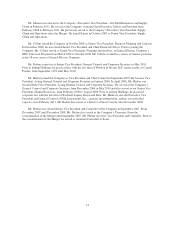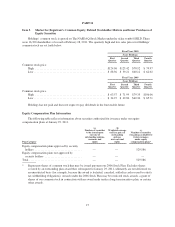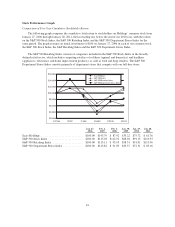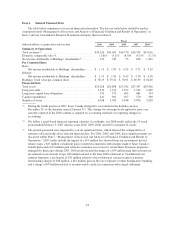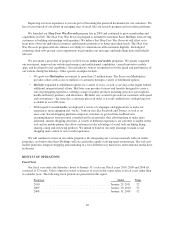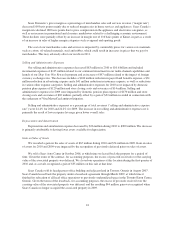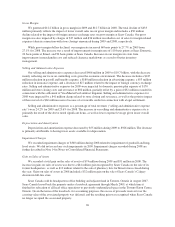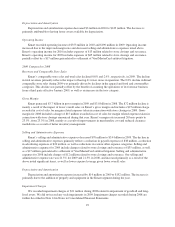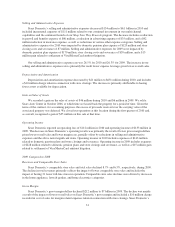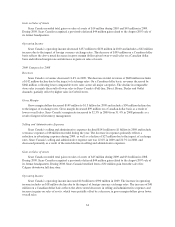Sears 2010 Annual Report Download - page 24
Download and view the complete annual report
Please find page 24 of the 2010 Sears annual report below. You can navigate through the pages in the report by either clicking on the pages listed below, or by using the keyword search tool below to find specific information within the annual report.Sears Domestic’s gross margin as a percentage of merchandise sales and services revenue (“margin rate”)
decreased 100 basis points mainly due to reduced margin rates in home services and appliances. Sears Canada’s
margin rate declined 180 basis points due to price compression in the appliance and electronics categories, as
well as an increase in promotional and clearance markdowns related to a challenging economic environment.
These declines were partially offset by an increase in margin rate of 110 basis points at Kmart, in part as a result
of an increase in sales of higher margin categories such as apparel and sporting goods.
The cost of our merchandise sales and services is impacted by commodity prices for various raw materials,
such as cotton, oil-related materials, steel and rubber, which could result in increases in prices that we pay for
merchandise. This may adversely affect our results in 2011.
Selling and Administrative Expenses
Our selling and administrative expenses decreased $83 million in 2010 to $10.6 billion and included
incremental expenses of $135 million related to our continued investment in our multi-channel capabilities and
launch of our Shop Your Way Rewards program and an increase of $97 million related to the impact of foreign
currency exchange rates. The decrease includes a $100 million reduction in payroll and benefits expense, a $31
million reduction in advertising expense and a $41 million reduction in insurance expense, as well as reductions
in various other expense categories. Selling and administrative expenses for 2010 were impacted by domestic
pension plan expense of $120 million and store closing costs and severance of $14 million. Selling and
administrative expenses for 2009 were impacted by domestic pension plan expense of $170 million and store
closing costs and severance of $82 million, partially offset by a gain of $32 million recorded in connection with
the settlement of Visa/MasterCard antitrust litigation.
Selling and administrative expenses as a percentage of total revenues (“selling and administrative expense
rate”) were 24.4% for 2010 and 24.2% for 2009. The increase in our selling and administrative expense rate is
primarily the result of lower expense leverage given lower overall sales.
Depreciation and Amortization
Depreciation and amortization expense decreased by $26 million during 2010 to $900 million. The decrease
is primarily attributable to having fewer assets available for depreciation.
Gain on Sales of Assets
We recorded a gain on the sales of assets of $67 million during 2010 and $74 million in 2009. Gain on sales
of assets for 2010 and 2009 were impacted by the recognition of previously deferred gains on sales of assets.
We sold a Sears Auto Center in October 2006, at which time we leased back the property for a period of
time. Given the terms of the contract, for accounting purposes, the excess of proceeds received over the carrying
value of the associated property was deferred. We closed our operations at this location during the first quarter of
2010 and, as a result, recognized a gain of $35 million on this sale at that time.
Sears Canada sold its headquarters office building and adjacent land in Toronto, Ontario in August 2007.
Sears Canada leased back the property under a leaseback agreement through March 2009, at which time it
finished its relocation of all head office operations to previously underutilized space in the Toronto Eaton Centre,
Ontario. Given the terms of the leaseback, for accounting purposes, the excess of proceeds received over the
carrying value of the associated property was deferred, and the resulting $44 million gain was recognized when
Sears Canada no longer occupied the associated property in 2009.
24


